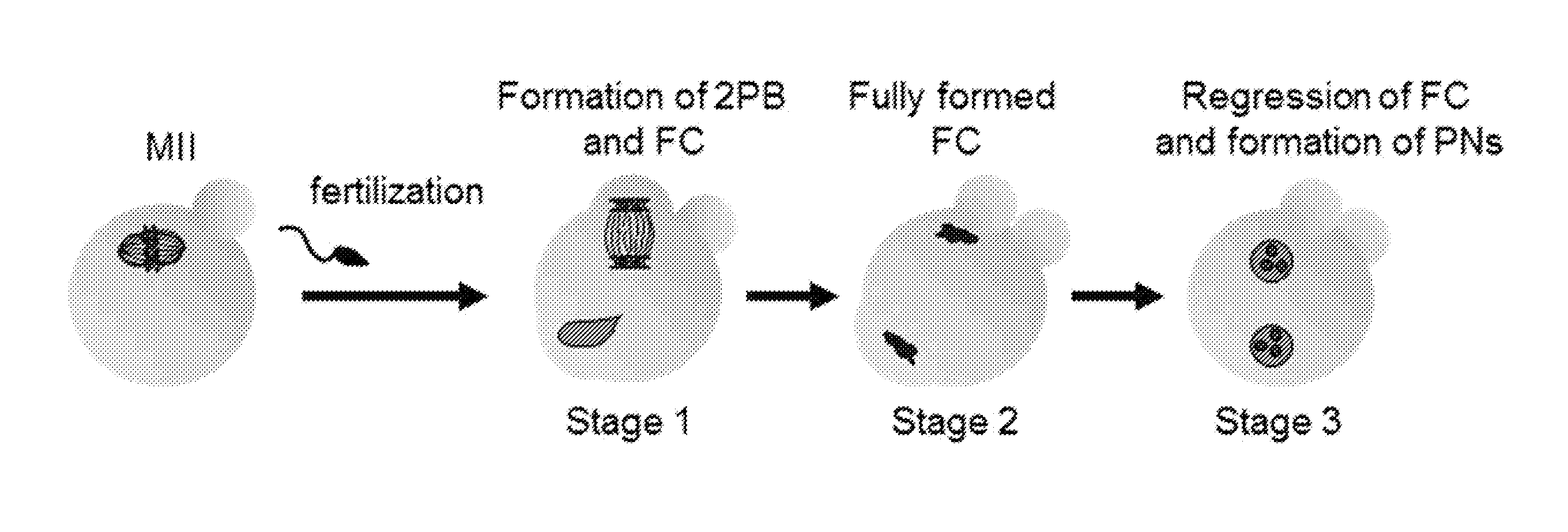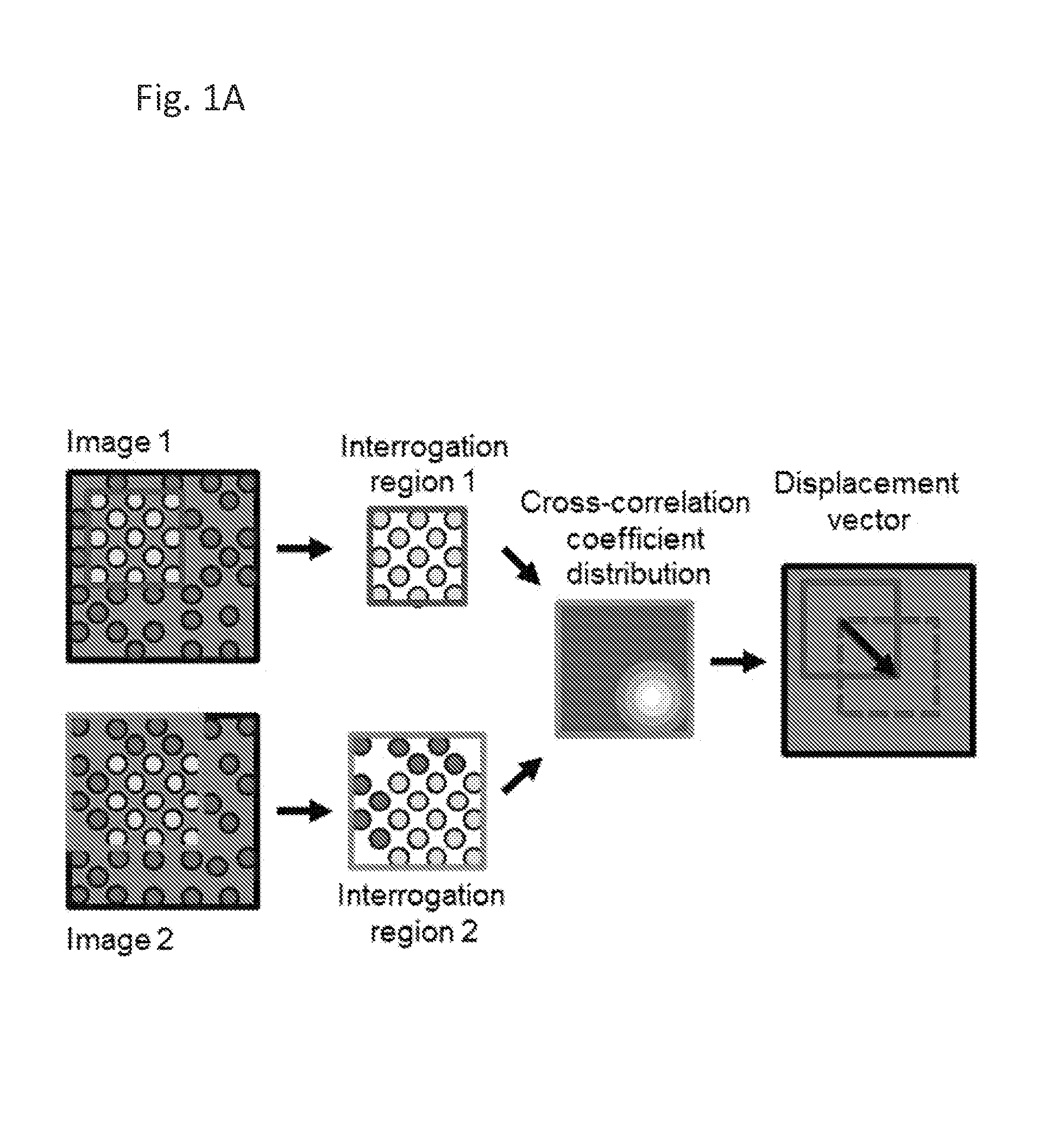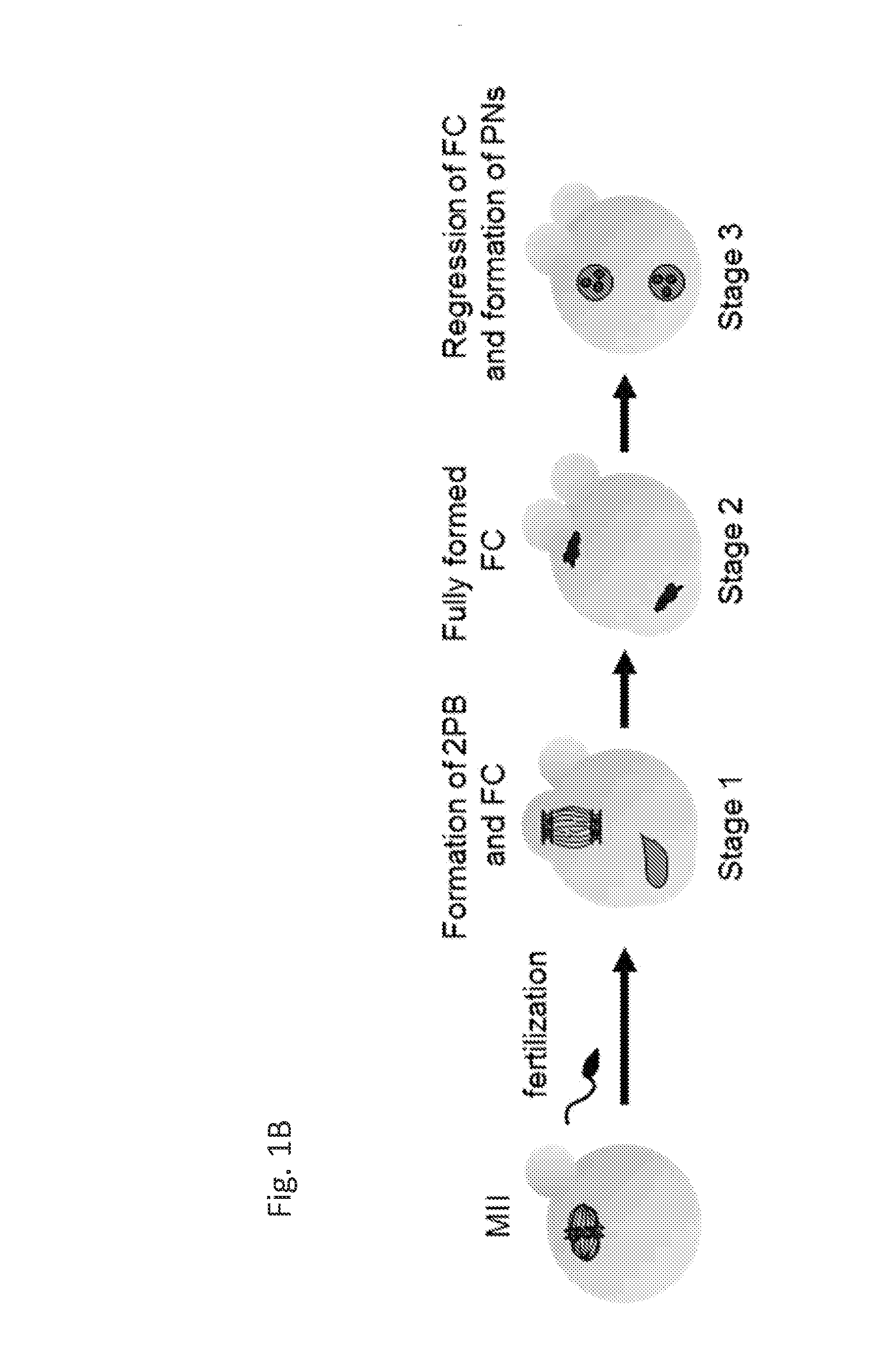Methods For Predicting Mammalian Embryo Viability
a mammalian embryo and viability technology, applied in the field of methods for predicting mammalian embryo viability, can solve the problems of costly approach and inevitable risks, and achieve the effects of accurate measurement of sub-pixel movements, high developmental potential, and high developmental potential
- Summary
- Abstract
- Description
- Claims
- Application Information
AI Technical Summary
Benefits of technology
Problems solved by technology
Method used
Image
Examples
example 1
Fertilization of the Mouse Egg Results in Bursts of Rhythmic Cytoplasmic Motion
[0135]To characterise cytoplasmic movements upon fertilization of the mouse egg and to evaluate whether, and if so how, they relate to other events associated with fertilization we first filmed eggs from the time immediately after fertilization until pronuclei formation. We then used advanced image analysis based on the PIV method21-24 to analyse and quantify these movements (FIG. 1A). This revealed that fertilization of the mouse egg was followed by dramatic periodic increases and decreases in velocity of the cytoplasmic movements (that we termed speed-peaks; FIG. 1B-D, n=55 unfertilized oocytes and n=125 eggs fertilized in vivo). This sequence of fast repetitive movements throughout the egg cytoplasm lasted for approximately 4 hours, until pronuclei formation. The speed-peaks were initially of relatively low amplitude (between anaphase of meiosis II and early FC outgrowth; Stage 1); but subsequently dev...
example 2
High Amplitude Cytoplasmic Speed-Peaks Correlate with Pulsations of the FC and Depend on the Actomyosin Cytoskeleton
[0137]Since the direction of the abrupt movements at Stage 2 suggested that the FC could be involved in their generation, we next examined the morphology of the FC throughout this period (69 speed-peaks, 14 zygotes). This showed that at each speed-peak, the apex of the FC sank inwards and the region where the FC merged into the convex outline of the zygote widened. As a consequence, the diameter of the zygote along the axis of the FC (hereinafter called the ‘FC-diameter’) decreased by 1.28+ / −0.66 μm (1.55+ / −0.79% of its length) (FIG. 2A, C). The shape of the FC was restored during the inter-peak interval (FIG. 2C). Interestingly, the extent of reduction of the FC diameter showed a linear association with speed-peak amplitude (20 zygotes, 71 speed-peaks analyzed) (FIG. 2B).
[0138]Since the actomyosin cytoskeleton is enriched in the FC region17, 25, we considered that thi...
example 3
Cytoplasmic Movements Correlate with and Depend on Ca2+ Transients
[0141]As fertilization is known to initiate oscillations of free Ca2+ 10, 29, we next wished to address whether the actomyosin-mediated speed-peaks might depend upon these Ca2+ pulses. To this end, we loaded fertilized eggs with the Ca2+ sensitive fluorescent dye FuraRed, and simultaneously collected FuraRed fluorescence and DIC images. In 32 zygotes, all 121 speed-peaks were accompanied by an increase in Ca2+. The cytoplasmic speed increased exactly (within the resolution of our recording interval) as Ca2+ levels peaked (FIG. 3A). Only in a single zygote with unusually frequent Ca2+ oscillations were some Ca2+ spikes (4 / 17) not mirrored by speed-peaks. In some eggs fertilized by ICSI we managed to record speed-peaks accompanying the first Ca2+ transient. They were of higher amplitude than the rest of Stage 1 speed-peaks (FIG. 9) corresponding to the first Ca2+ transient being bigger than subsequent ones.
[0142]To dete...
PUM
| Property | Measurement | Unit |
|---|---|---|
| volume | aaaaa | aaaaa |
| volume | aaaaa | aaaaa |
| volume | aaaaa | aaaaa |
Abstract
Description
Claims
Application Information
 Login to View More
Login to View More - R&D
- Intellectual Property
- Life Sciences
- Materials
- Tech Scout
- Unparalleled Data Quality
- Higher Quality Content
- 60% Fewer Hallucinations
Browse by: Latest US Patents, China's latest patents, Technical Efficacy Thesaurus, Application Domain, Technology Topic, Popular Technical Reports.
© 2025 PatSnap. All rights reserved.Legal|Privacy policy|Modern Slavery Act Transparency Statement|Sitemap|About US| Contact US: help@patsnap.com



